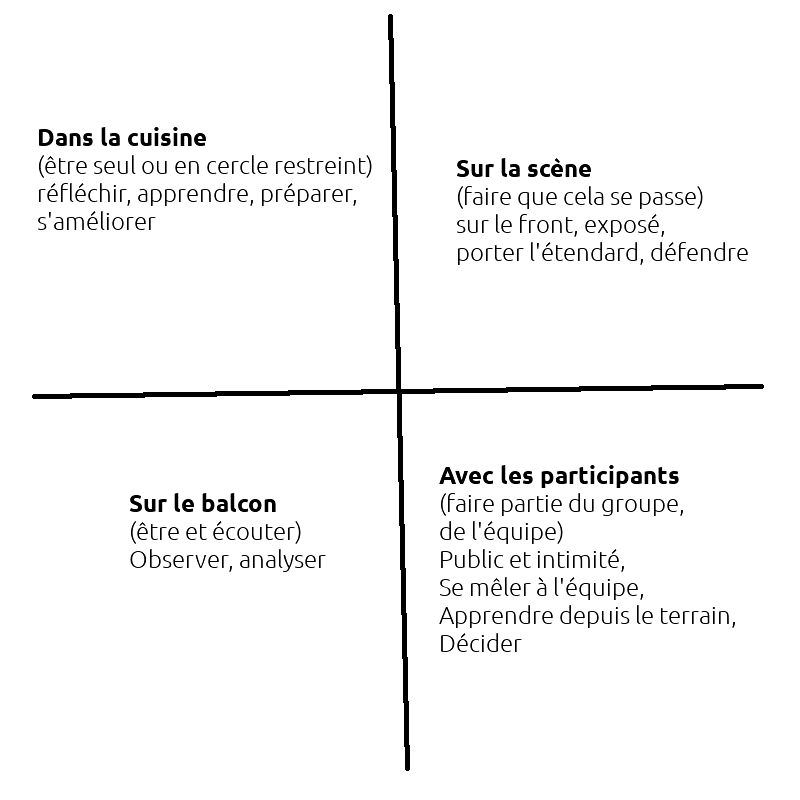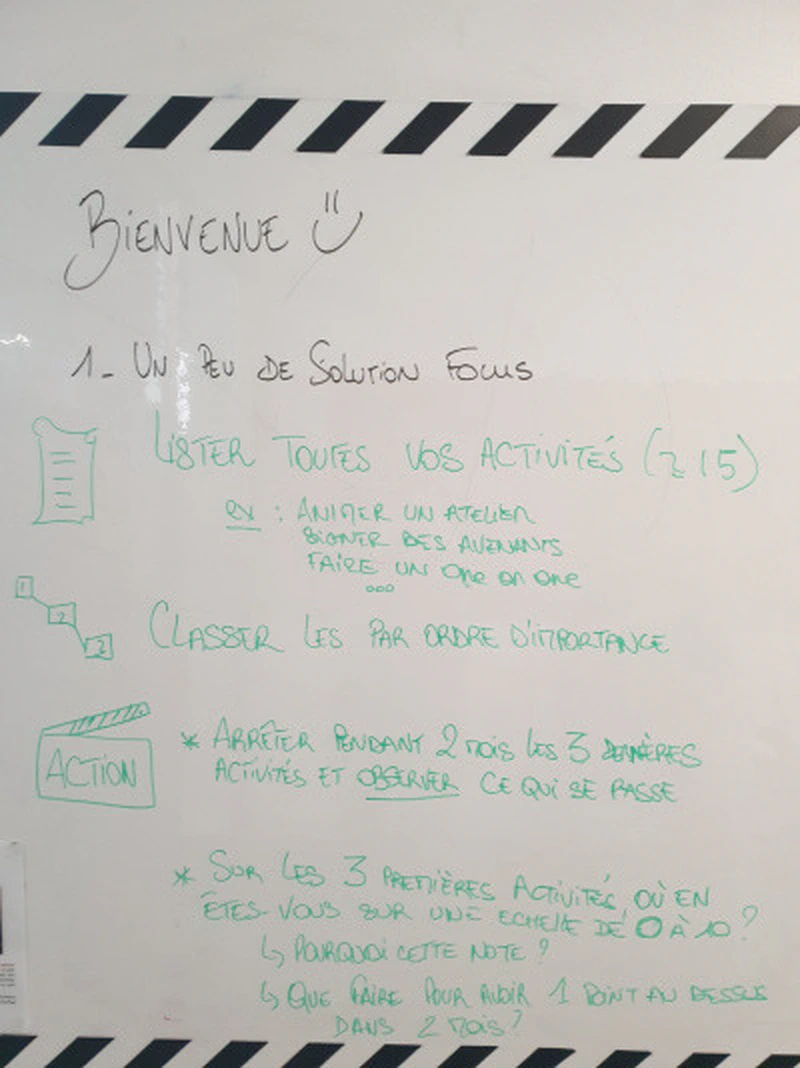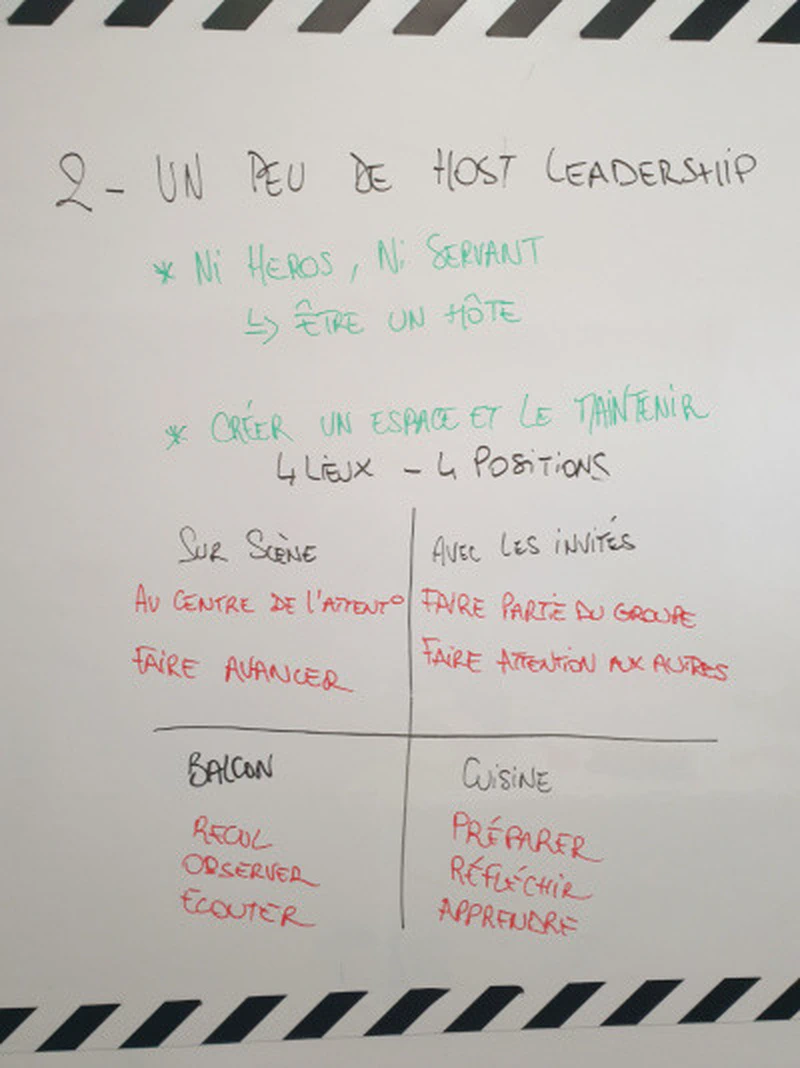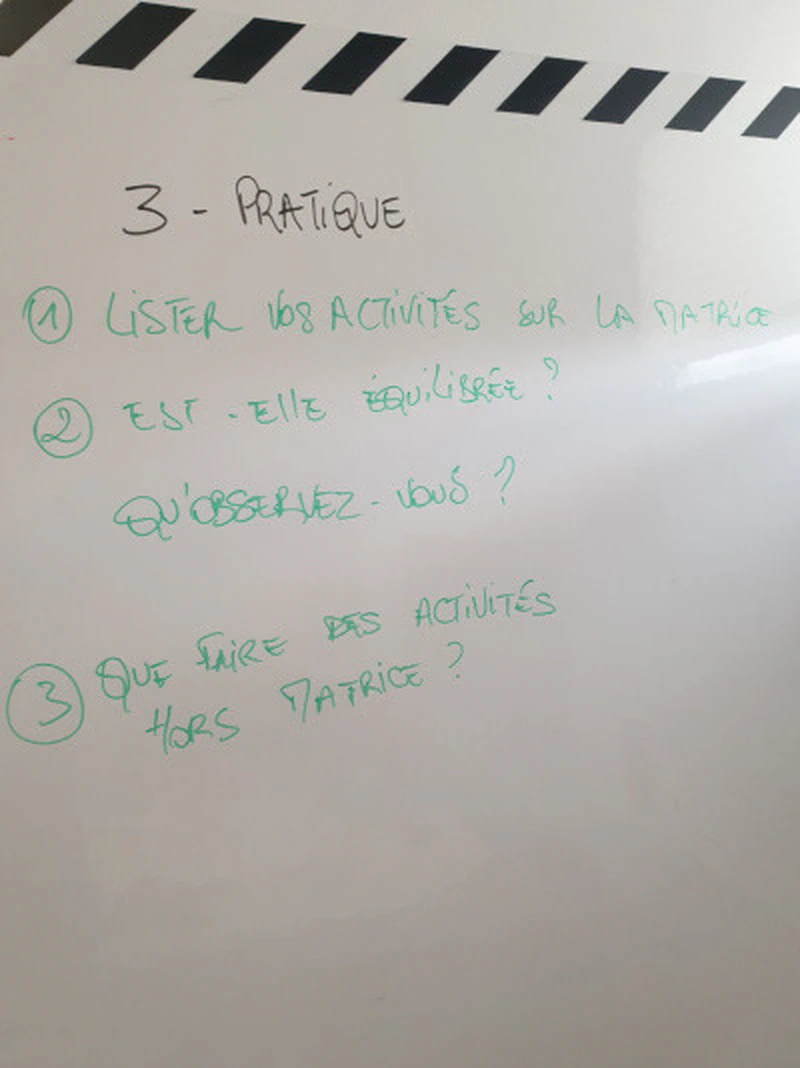Very recently Pauline had the opportunity and kindness to run through a workshop format that I use when I need to make managers, leaders, reflect on their roles. It’s an assembly of a very classic part of solution focus (or solution-focused brief therapy) and host leadership host leadership.
This also echoes the workshop the practice sawmill.
It is very important that managers or leaders reflect on their role, their posture, their intention. To dig deeper, a podcast from me “Transformation starts with that of managers” on Thomas’s Café Craft.
This workshop lasts approximately one hour, and can involve as many managers / leaders as you wish since they will work in pairs. They must be equipped with blank sheets and something to write with.
First part: solution focus approach
You first ask each manager to list their activities. Let’s say you’re looking for about fifteen, hoping to have at minimum ten.
I am regularly surprised to see that some managers don’t know how to list their activities. You can simplify the task by suggesting they look at their calendars, by giving them examples: “team meeting”, “recruitment”, “executive committee”, “consolidation”, etc.
Prioritizing activities
After noting these activities, you ask them to prioritize them. From most important to least important. It’s up to them to decide how to handle the “importance” criterion. When this ordering is complete, you ask them:
-
Would it be possible to conduct an experiment: this word is very important, it allows us to say that if it doesn’t work we’ll go back, an experiment is not felt as something lasting, solid, so we really try with the assurance of being able to go back if needed. Let me rephrase. Would it be possible to conduct an experiment: could you stop doing the last two activities on your list for the next two or three weeks and observe the results?
-
From zero to ten, from a qualitative point of view, how do you rate the first three? For example, “recruitment”, I rate it 6/10. You must then ask yourself two new questions. What earned these points for this activity? (Even 2/10, where do these two points come from, there’s always something positive). How could I gain one or two more points on these activities in the next two months? For example, how to go from 6/10 to 7/10 next month in “recruitment”?
They have this reflection in mind. How do I prioritize my activities? Which ones could I temporarily stop? With what effect? Which are the most important? Why? How do I rate them qualitatively (even though they’re my most important activities)? How can I improve in the next two months? ). This is the moment to exchange with their partner and share their reflections to get their feedback, their opinion, their suggestions, their perspective.
Second part: host leadership approach
You then ask each person to place these activities (all those listed) in this quadrant (extracted from host leadership). It’s worth taking 5 to 10 minutes to explain the positions of host leadership and the thinking behind this title. I’ll try to summarize it very briefly. The idea of this modern management is to maintain the space, create and maintain it. For this, six roles and four symbolic positions. See the article “ecosystem host”.
It’s little, but it’s already a lot to digest (many combinations). To get things started, I generally restrict myself to the positions.
Positions
- On stage, assuming the responsibility of being the center of attention and assuming the messages carried. Making things move forward by embodying them. Being on the front line, exposed, taking responsibility. Carrying the standard, defending the intention.
- In the gallery: one among others. Showing yourself among others, being in the group’s intimacy. Mingling with the team and thus deciding while being on site (the gemba of lean) by learning from the field.
- On the balcony: observing and learning, ready to provide support to maintain this space. We analyze, we listen, we observe. We take a step back.
- In the kitchen: where recipes are prepared and tasted before being served. Being alone or in a small group to prepare what’s next. Reflecting on events, observations, looking for how to improve.

You thus ask each person to place their activities on this quadrant. This raises questions: are they distributed across all positions? Are there imbalances (too much kitchen, not enough stage for example)? What activities would help fill these deficits? Are there activities that don’t belong to any position? If yes, is it legitimate to do them?
Here too, the pairs can exchange.
To finish
Concretely, each manager / leader can leave with two actions:
- Gain +1 on their most important activities in the next two months.
- Balance, fill in, their distribution on the host leadership quadrant.
Good workshop. Thank you.
Images from the workshop
… from Pauline who created an arrowed path. Thank you Pauline.


